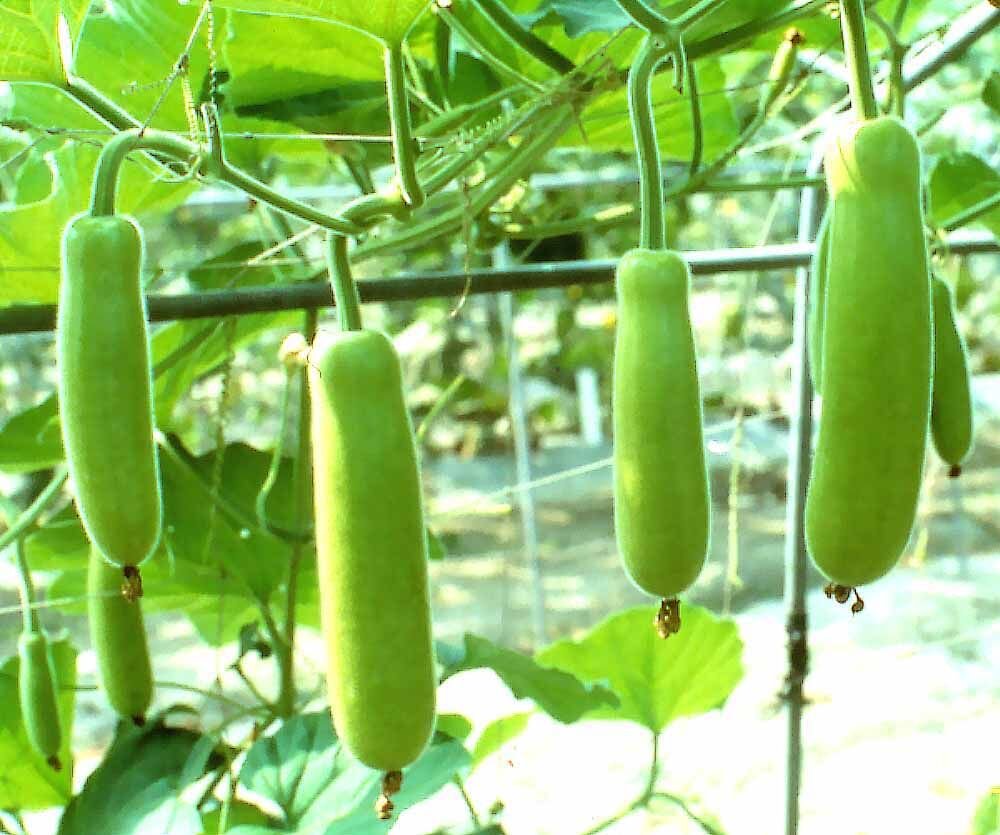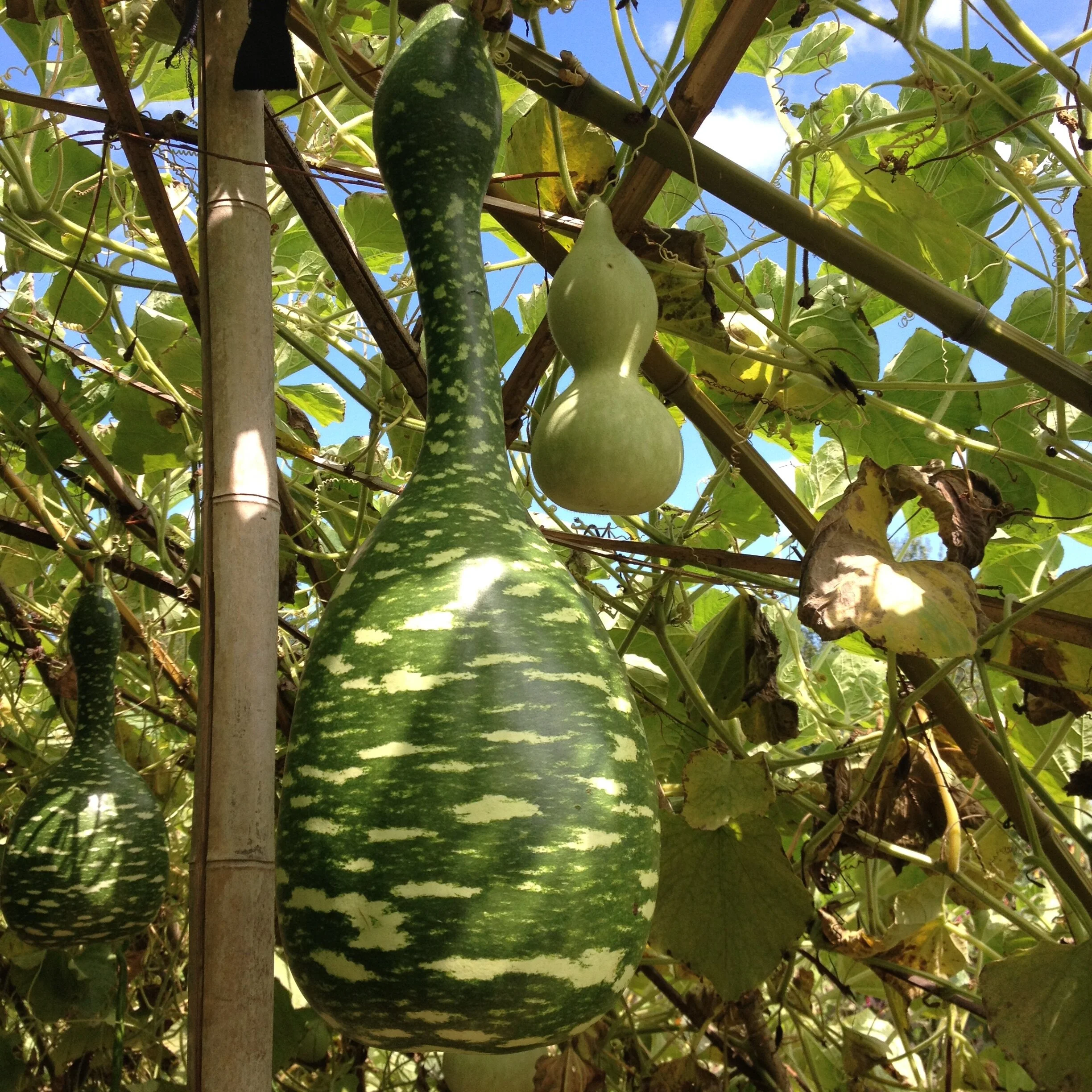Bottle gourd or calabash
Young fruits of bottle gourd, ready for eating.
A calabash, bottle gourd, or white-flowered gourd, Lagenaria siceraria, also known by many other names, including long melon, New Guinea bean and Tasmania bean, is a vine grown for its fruit, which can be either harvested young to be consumed as a vegetable, or harvested mature to be dried and used as a utensil. When it is fresh, the fruit has a light green smooth skin and white flesh.
Calabash fruits have a variety of shapes: they can be huge and rounded, small and bottle shaped, or slim and serpentine, and they can grow to be over a three feet long. Rounder varieties are typically called calabash gourds. The gourd was one of the world's first cultivated plants grown not primarily for food, but for use as containers. The bottle gourd may have been carried from Africa to Asia, Europe, and the Americas in the course of human migration, or by seeds floating across the oceans inside the gourd. It has been proven to have existed in the New World prior to the arrival of Europeans.
Bottle gourds come in an array of flesh patterns.
Because bottle gourds are also called "calabashes", they are sometimes confused with the hard, hollow fruits of the unrelated calabash tree, Crescentia cujete, whose fruits are also used to make utensils, containers, and musical instruments.
Cucuzzi calabash.
Sow directly in the ground after threat of frost or protect from any frost if planted somewhat earlier, and grow throughout the entire warm season. Plant in full sun and provide ample space for the vine to climb, such as a fence or even better, an arbor. Mulch roots and plant in amended garden soil. Keep soil evenly moist feed occasionally with an organic food. Harvest young as a vegetable and use in stir-fries, pickles, veggie bakes, and more. Let the fruits mature to produce “gourds”.
A whole lot of dried gourds.



